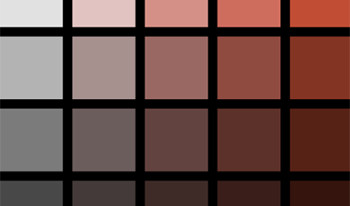
Color appearance is multidimensional, and color space has been a useful geometric representation for display modeling and optimization. However, the three fundamental attributes of color, i.e., brightness, saturation, and hue, have not found their singly corresponding physical correlates. Changes along one physical dimension interfere with other color attributes, which has been a deficiency of the existing color spaces, particularly prevalent for high-dynamic-range and wide-color-gamut displays. This paper describes how we set out to develop independent color scales for each attribute. Based on both psychophysical experiments and computational modeling, the surfaces/lines of equal brightness/saturation, as well as the boundaries between surface versus illumination color modes, have been characterized. Furthermore, the independent relations between those new scales have been quantitatively evaluated. Those results promise a new color representation that is more intuitive and efficient for color controls in displays.
Hao Xie, "Point and Line to Surface: The Geometric Elements of Display Color Modeling" in London Imaging Meeting, 2022, pp 70 - 73, https://doi.org/10.2352/lim.2022.1.1.16
 Find this author on Google Scholar
Find this author on Google Scholar Find this author on PubMed
Find this author on PubMed